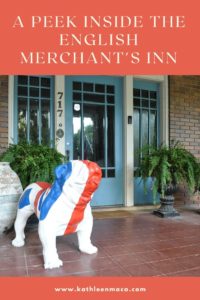It’s Cover Reveal Day!





 James Briton “Brit” Bailey was more than a real person. He was a real character. Known for his eccentric personality, love of drink and penchant for brawls, life was never dull in his presence. At six feet tall (quite a height for the time), was an imposing figure with his jet-black hair and broad brimmed hat.
James Briton “Brit” Bailey was more than a real person. He was a real character. Known for his eccentric personality, love of drink and penchant for brawls, life was never dull in his presence. At six feet tall (quite a height for the time), was an imposing figure with his jet-black hair and broad brimmed hat.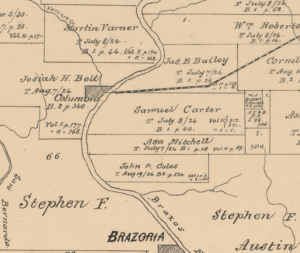
 ade the same demand. Roaring with delight, Brit jumped onto a table and energetically danced a jig while onlookers applauded.
ade the same demand. Roaring with delight, Brit jumped onto a table and energetically danced a jig while onlookers applauded.

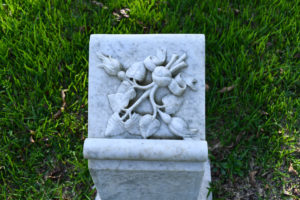 Brit didn’t want anyone passing by his grave saying, “There lies Brit Bailey” and he figured if her was standing up….they couldn’t!
Brit didn’t want anyone passing by his grave saying, “There lies Brit Bailey” and he figured if her was standing up….they couldn’t!




 On the way home from Lost Maples State Natural Area (read more about this trip here), my friend and I made a stop at Love Creek Apple Orchards Cider Mill and Country Store to treat our tastebuds to some fall goodness.
On the way home from Lost Maples State Natural Area (read more about this trip here), my friend and I made a stop at Love Creek Apple Orchards Cider Mill and Country Store to treat our tastebuds to some fall goodness.
 If you aren’t passing by during harvest season there are still plenty of yummy things to indulge in. Walk through the store to a covered courtyard area and order up tasty freshly made apple cider, an apple dumpling with a sugary crunch, a slice of apple pie or even apple ice cream. Of course they also have burgers, sandwiches, salads and quesadillas if you’re more “hungry” than “munchie.”
If you aren’t passing by during harvest season there are still plenty of yummy things to indulge in. Walk through the store to a covered courtyard area and order up tasty freshly made apple cider, an apple dumpling with a sugary crunch, a slice of apple pie or even apple ice cream. Of course they also have burgers, sandwiches, salads and quesadillas if you’re more “hungry” than “munchie.”



 (And, um . . . if you’re shopping for me . . . remember the apple butter. Hint, hint!)
(And, um . . . if you’re shopping for me . . . remember the apple butter. Hint, hint!)
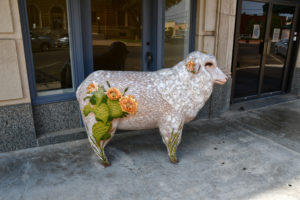

 Each is sponsored (usually by the location where they’re making an appearance) and given a punny name: Happy Trails to EWE, Lambscapes, Don’t EWE Mess with Texas, Lucky EWE, Lamb of God, and more. MANY m
Each is sponsored (usually by the location where they’re making an appearance) and given a punny name: Happy Trails to EWE, Lambscapes, Don’t EWE Mess with Texas, Lucky EWE, Lamb of God, and more. MANY m ore.
ore.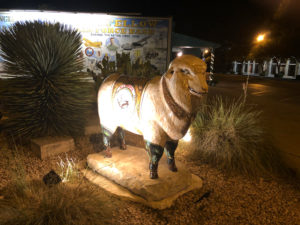 With over 100 sheep in this colorful flock they can keep visitors happily hunting for days.
With over 100 sheep in this colorful flock they can keep visitors happily hunting for days.

 But Lost Maples’ most popular months are October and November when the foliage is ablaze in greens, reds, orange and gold.
But Lost Maples’ most popular months are October and November when the foliage is ablaze in greens, reds, orange and gold.
 ore, green ash, black willow, sugar hackberry and pecan trees tucked into limestone canyons carved by the upper Sabinal River provide the dazzling seasonal color. Add in an array of wildlife and seasonal wildflowers and this becomes one of the must-see autumn spots in the state.
ore, green ash, black willow, sugar hackberry and pecan trees tucked into limestone canyons carved by the upper Sabinal River provide the dazzling seasonal color. Add in an array of wildlife and seasonal wildflowers and this becomes one of the must-see autumn spots in the state. Fall temperatures at Lost Maples are mild, and the stargazing at night is jaw dropping. The sky looked like a sea of twinkling glitter. I used a handy phone app to identify some of the stars and constellations we spotted. You can find more information about the free app here.
Fall temperatures at Lost Maples are mild, and the stargazing at night is jaw dropping. The sky looked like a sea of twinkling glitter. I used a handy phone app to identify some of the stars and constellations we spotted. You can find more information about the free app here. display about Lost Maples, and don’t forget to pick up a free trail map to set your course. There are ten miles of well-maintained hiking trails, including a challenging, steep seven-mile loop that takes you along the top of a 2,200 foot cliff.
display about Lost Maples, and don’t forget to pick up a free trail map to set your course. There are ten miles of well-maintained hiking trails, including a challenging, steep seven-mile loop that takes you along the top of a 2,200 foot cliff.


 I was intent on finding Monkey Rock during
I was intent on finding Monkey Rock during  my hike, one of most photographed spots in the park year round, and was grateful to find several signs indicating the general route to him. Just follow the marked trail and as you come into a clearing by the bluffs, look up! There’s no mistaking his toothless grin.
my hike, one of most photographed spots in the park year round, and was grateful to find several signs indicating the general route to him. Just follow the marked trail and as you come into a clearing by the bluffs, look up! There’s no mistaking his toothless grin. for an array of birds, gray fox, white-tailed deer, armadillos, raccoons, bobcats, squirrels and an occasional javelina. Most of the wildlife will understandably avoid people, but the more tranquil (quiet!) your walk, the better chance you have of spotting them.
for an array of birds, gray fox, white-tailed deer, armadillos, raccoons, bobcats, squirrels and an occasional javelina. Most of the wildlife will understandably avoid people, but the more tranquil (quiet!) your walk, the better chance you have of spotting them.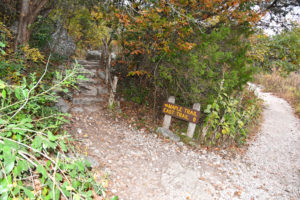




 Weekends fill up fast with only 300 guest slots available from 8 a.m. until noon, and another 150 spots from 1 p.m. to 5 p.m. Once you’re there you can stay until 10 pm.
Weekends fill up fast with only 300 guest slots available from 8 a.m. until noon, and another 150 spots from 1 p.m. to 5 p.m. Once you’re there you can stay until 10 pm. 
 Here’s the secret: you can actually purchase a Save the Day pass 30 days in advance online! When I chose the dates of my visit I counted backward on my calendar and jotted myself a reminder to book as soon as the dates were able to be claimed.
Here’s the secret: you can actually purchase a Save the Day pass 30 days in advance online! When I chose the dates of my visit I counted backward on my calendar and jotted myself a reminder to book as soon as the dates were able to be claimed. Another insider tip: Though the last two weeks of October and the first two weeks of November are traditionally the height of the fall color season, this can vary from year to year due to weather patterns. Be sure to check resources like the fall foliage conditions for the most current updates. A link is here.
Another insider tip: Though the last two weeks of October and the first two weeks of November are traditionally the height of the fall color season, this can vary from year to year due to weather patterns. Be sure to check resources like the fall foliage conditions for the most current updates. A link is here.



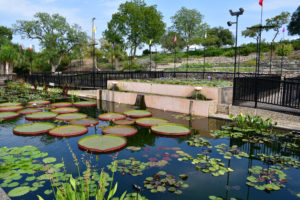

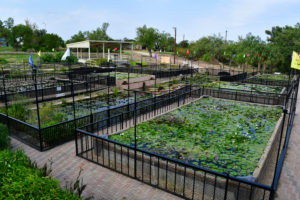

 Dozens of dragonflies and birds flitted around the pools and flowers, which made it even more enchanting.
Dozens of dragonflies and birds flitted around the pools and flowers, which made it even more enchanting.


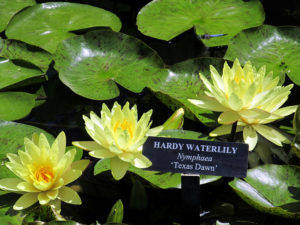




 yde was so disgusted with the news that he marched the teller out to the getaway car at gunpoint, and ordered him to repeat what he had just said to Bonnie…who laughed hysterically. Clyde then shot out the windows of the bank in frustration.
yde was so disgusted with the news that he marched the teller out to the getaway car at gunpoint, and ordered him to repeat what he had just said to Bonnie…who laughed hysterically. Clyde then shot out the windows of the bank in frustration. m, which told a version of their story that is far from the truth, glorified the couple as being glamorous outlaws. In reality they murdered at least thirteen people.
m, which told a version of their story that is far from the truth, glorified the couple as being glamorous outlaws. In reality they murdered at least thirteen people.


 I love when movies about historical characters are able to use actual locations from their (sometimes fictionalized) lives, don’t you?
I love when movies about historical characters are able to use actual locations from their (sometimes fictionalized) lives, don’t you?



 Double Bayou Dance Hall was built in the late 1920s using cedar logs as a dance floor, hog wire and wood for the walls topped by a tin roof. The tacks and staples that held tar paper covering can still be seen on the exterior wood.
Double Bayou Dance Hall was built in the late 1920s using cedar logs as a dance floor, hog wire and wood for the walls topped by a tin roof. The tacks and staples that held tar paper covering can still be seen on the exterior wood.



 l in May 2003. Treat yourself, and listen to a snippet of one of the tunes HERE.
l in May 2003. Treat yourself, and listen to a snippet of one of the tunes HERE. Today the ruins stand behind a Texas State Historical Marker, with the falling roof and broken floorboards sheltering snakes and spiders rather than musicians.
Today the ruins stand behind a Texas State Historical Marker, with the falling roof and broken floorboards sheltering snakes and spiders rather than musicians.
